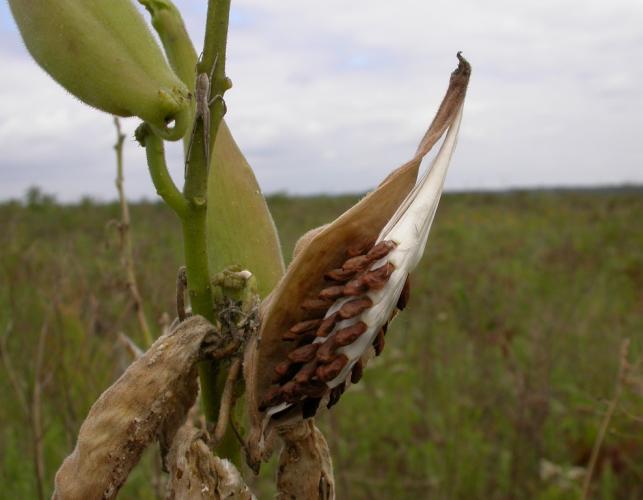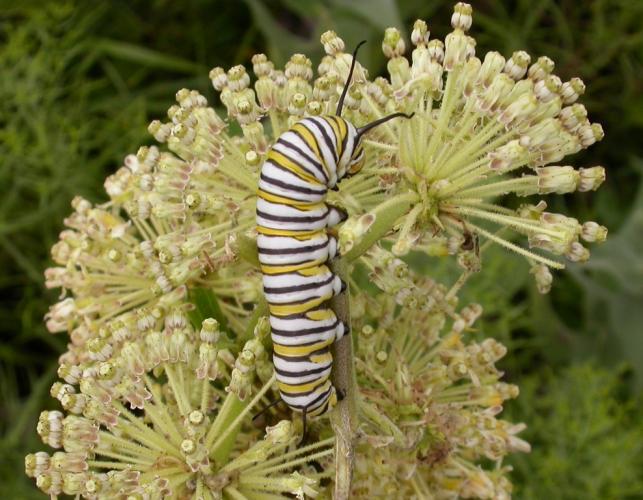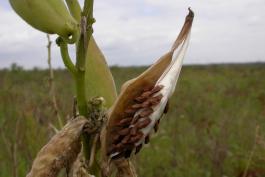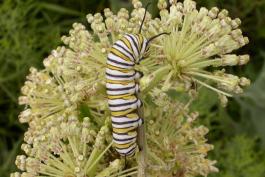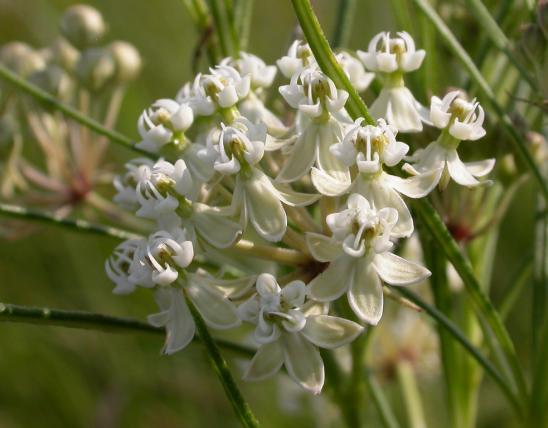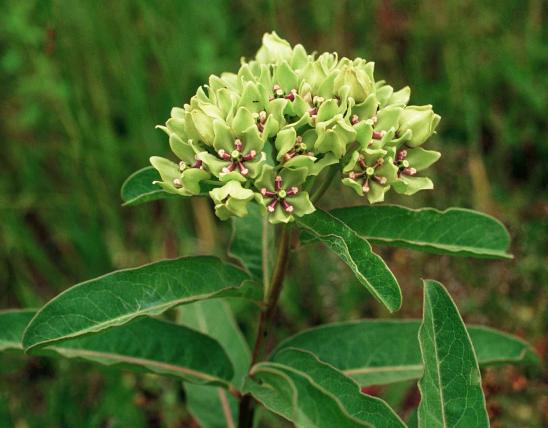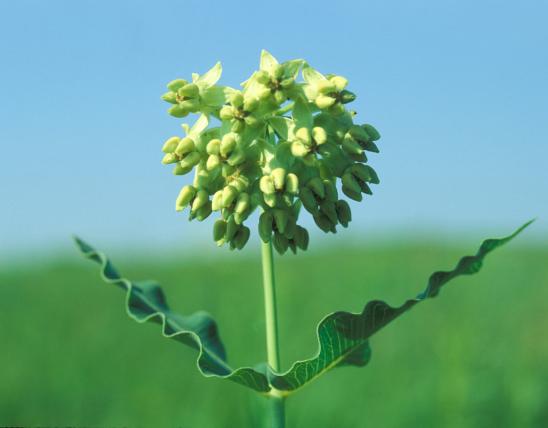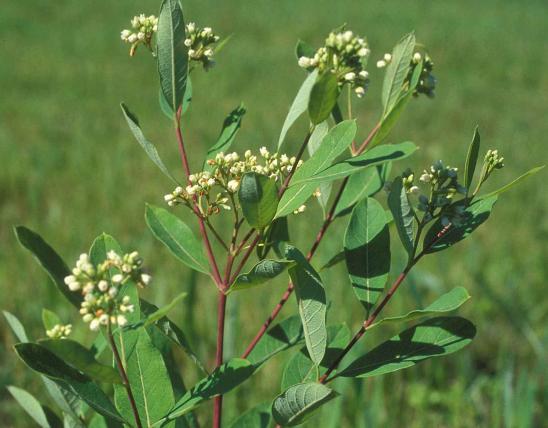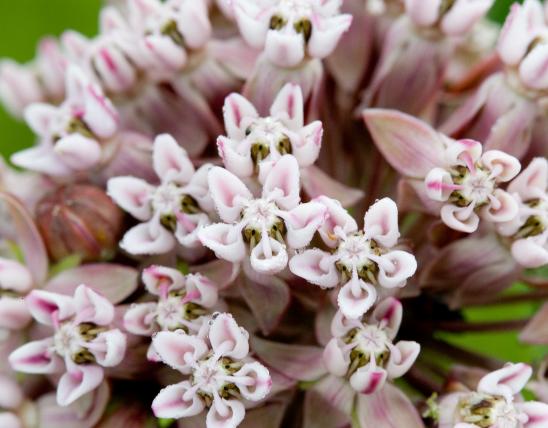
Prairie milkweed is a perennial herb, sometimes with a few branches toward the tip, with hairy stems and flower stalks. Sap milky. Flowers in stalked umbels (rounded clusters) arising from the upper leaf axils, with 25–90 flowers per umbel; each flower quite small, with pale green petals, the reflexed petals often purple-tinged with white edges. Blooms May–August. Leaves narrow, lance-shaped, with prominent side veins on the underside; arrangement alternate, but so crowded as to appear opposite or whorled. Fruits smooth, minutely hairy, ascending pods on descending stalks, to 5 inches long, containing seeds having white, cream-colored, or tan silky hairs.
Similar species: Missouri has several other species of milkweeds. Learn more about them on their group page and on the several other individual species pages in this guide.
Height: 1–3 feet.
Scattered mostly in the Glaciated and Unglaciated Plains, which is basically the northwestern two-thirds of the state. Mostly absent from the Ozarks and Bootheel.
Habitat and Conservation
Occurs in bottomland and upland prairies and glades as well as pastures, roadsides, and railroads.
Status
The entire former milkweed family (Asclepiadaceae) was fairly recently rolled into the dogbane family (Apocynaceae). For many years, botanists knew the two families were closely related. The milkweed group, with its distinct floral structures, is still considered a unique subfamily or tribe of the dogbane family. As you consult various sources, you can expect to see milkweeds grouped in either family.
Human Connections
Milkweeds have a long list of historical medicinal uses. They are being planted more and more in order to help the declining monarch butterfly populations. This species, with its subtle colors yet exciting round floral clusters, can be a showpiece in native wildflower gardens.
Ecosystem Connections
Many bees, butterflies, and skippers drink nectar from the flowers, and crab spiders often hide in the clusters, hunting them. Monarch butterflies use milkweeds as larval food plants, collecting the sap's toxic cardiac gycosides in their bodies and becoming unpalatable to predators.


